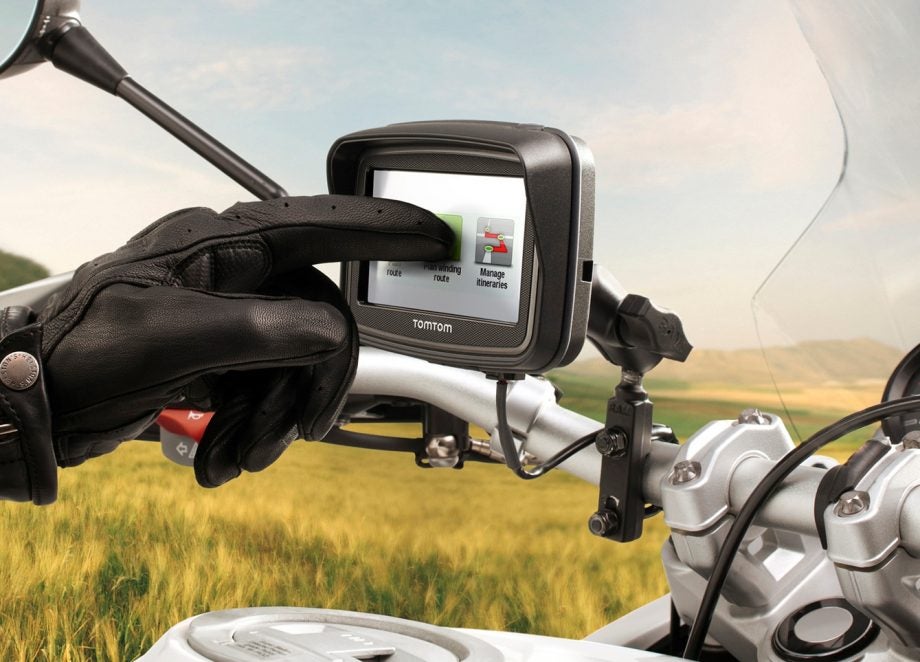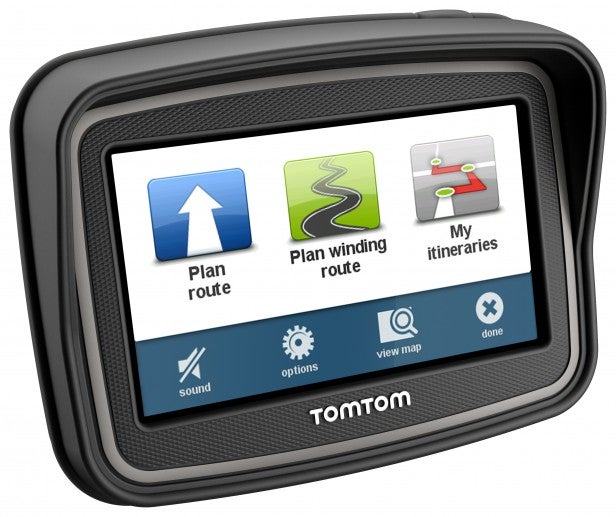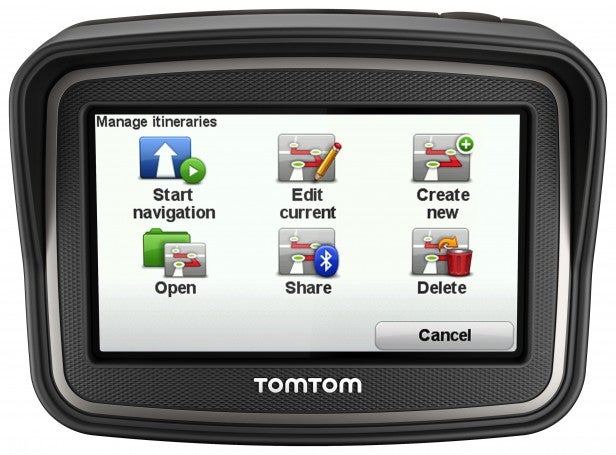TomTom Rider v4 2013 Review
TomTom Rider v4 2013
TomTom's fourth generation bike sat nav

Sections
- Page 1 TomTom Rider v4 2013 Review
- Page 2 Setup & Performance Review
- Page 3 Best TomTom Rider v4 Alternatives & Verdict Review
Verdict
Pros
- Fast, accurate route planning
- Tough, durable construction
- Motorbike specific UI & features
Cons
- No HD Traffic support
- No external speakers
- No spoken directions when paired with a smartphone
- Expensive for the feature set
Key Specifications
- Review Price: £349.99
- 4.3-inch, 480 x 272 touchscreen
- Bluetooth pairing
- Waterproof
What is the TomTom Rider v4?
This is TomTom’s fourth generation dedicated motorbike sat nav. It has a more rugged construction than regular TomTom units to cope with wind buffering and exposure to the elements. It has a custom motorbike-specific user interface allowing it to be operated with gloves. Marketing materials often refer simply to the ‘TomTom Rider’ so be sure to check you are buying the TomTom Rider v4 edition that is new for 2013.
TomTom Rider v4 – Design
Take the TomTom Rider v4 out of its box and the first thing you notice is the weight. Its rugged construction means at 353 grams the Rider is 40-50 per cent heavier than most TomToms and it is twice as thick – 53mm to be precise, or roughly as thick as a doorstep sandwich. It still feels good in hand, however, and is small enough to store easily.
Furthermore, it’s very durable. It is largely unchanged from previous editions, but the matt black finish is practical and scuff resistant, while a hood helps shield the TomTom Rider v4’s 4.3-inch screen from sunlight. This only works from some angles, but TomTom has fitted the Rider with a sunlight readable screen in any case.
Given the Rider will be exposed to the elements it also carries an Ingress Protection (IP) rating of X7. The seven represents water protection and specifies that the Rider can withstand limited immersion in water, so even the heaviest of down pours shouldn’t be a problem. The X is irrelevant as it represents dust and if water cannot get in, neither can dust.
It is true that the Rider is far from the most attractive sat nav in TomTom’s product line, but it is certainly the most practical and durable. 
TomTom Rider v4 – Features
Interestingly, the TomTom Rider v4 is both heavy and light on features. For instance, the screen may be sunlight readable, but it is also low resolution at just 480 x 272. It remains easily readable, but feels light years behind the high density displays seen on modern smartphones and even some car sat navs.
Next to tally in the cons column is the absence of Live services, since the Rider lacks the integrated modem seen on the Live range. The knock-on effect is TomTom Places (a web-based search for businesses) is entirely absent, though Live POIs can be added manually via the company’s long running ‘Home’ PC and Mac software. It also means there is no support for HD Traffic, TomTom’s dynamically updating traffic monitoring software.
As such if there is a major hold up one morning, you’ll ride straight into it. This is less of a problem for bikers than car drivers since bikes filter, but it is still a notable omission from a premium device.
On the plus side, the Rider is customised heavily for motorcycle riders. The home screen features the addition of “Plan winding route”, which aims to pick the most enjoyable twisty method of getting somewhere rather than the most efficient.
Itineraries are also featured more prominently on the Rider than a standard TomTom sat nav, given bespoke routes and advance route planning are a major part of enjoying a motorbike for most riders. Itineraries allow the easy insertion of multiple way points in any route and they are also backed up by TomTom’s own route software. Itineraries can also be shared over Bluetooth with other Rider sat navs, which is a nice touch. 
TomTom is keen to point out its tie in with motorbike-centric route making software ‘Tyre’ as well. Tyre integrates with the Rider so created routes can be uploaded directly to the Rider when it is connected into a PC. But note that Tyre is freeware and also works in this fashion with Garmin’s competing 350LM and 660LM motorbike sat navs.
Another tick in the plus column is the Rider’s Bluetooth lets it pair with a headset for spoken turn-by-turn directions and it can pair with a phone to sync contacts and make phone calls. Countering this the Rider doesn’t allow for spoken directions through earphones connected to a paired phone (like the 660LM) and it pair with both a headset and phone simultaneously to allow calls via a headset resulting in an either/or situation. Unlike Garmin’s sat navs, the Rider also has no external speakers.
That said we end on several pluses with many core TomTom features present and correct. These include Advanced Lane Guidance for turnings, IQ Routes, which provides a database of average road speeds at specific times of the day, near limitless POIs and an extensive speed camera database.
TomTom also bundles free lifetime European map updates and its long running ‘Home’ PC software allows the Rider to receive software updates, purchase additional country-specific maps and install daily map alterations.

